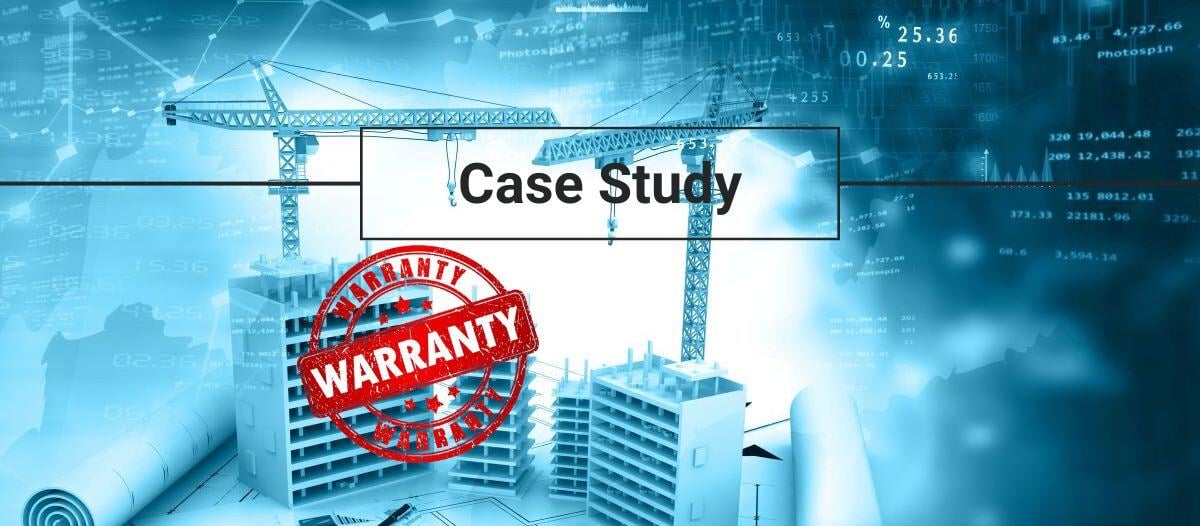Sustainability at a Global Scale
Leveraging smart building tech for business advantages

As global awareness of climate change grows, there is a significant push to regulate commercial buildings' energy use and resulting carbon emissions. Recognizing their substantial contribution to greenhouse gas (GHG) emissions, international initiatives have emerged to address the issue. According to the U.S. Department of Energy, commercial buildings alone generate a staggering 826 million metric tons of carbon dioxide emissions, comprising 16 percent of all U.S. carbon dioxide emissions. In the EU, buildings account for 40 percent of energy consumed and 36 percent of energy-related GHG emissions, according to the European Commission. Heightened understanding of commercial buildings' environmental impact has catalyzed efforts to implement stricter regulations, incentivize energy-efficient practices and promote sustainable building designs globally. These initiatives aim to not only reduce emissions but also foster a transition toward more sustainable, low-carbon infrastructure.
The operations of commercial buildings, including lighting, heating, cooling and ventilation, often rely heavily on fossil fuels such as natural gas and coal-fired electricity, releasing carbon dioxide (CO2) into the atmosphere. Poor insulation and inefficient systems further exacerbate emissions, as energy is wasted in heating and cooling processes. Overall, the collective impact of these activities underscores the importance of implementing sustainable practices and technologies in commercial buildings to mitigate their environmental footprint.
Pending SEC legislation
Since the U.S. Securities and Exchange Commission (SEC) first proposed its climate disclosure ruling in March 2022, corporate sustainability reporting has evolved rapidly. The SEC regulations, while currently under a temporary stay pending judicial review of the new rules, would require publicly traded companies or those preparing for IPO to provide climate disclosures in their annual reports and registration statements.
The current regulations focus solely on Scope 1 and Scope 2 emissions. Scope 1 emissions are direct emissions from sources that are owned or controlled by the company (e.g., transport from the combustion of fuel in fleet vehicles or combustion of fuels in sources like boilers, furnaces and incinerators). Scope 2 emissions are indirect emissions, which are emissions released into the atmosphere from the use of purchased energy from utility companies. For many companies, energy is one of the largest sources of emissions.
The proposed regulation has prompted a reevaluation of how organizations, utility companies and energy producers approach their environmental impact. However, the clarity of this ruling remains elusive, providing a window for companies to prepare for impending changes. Despite the absence of strict regulatory requirements, businesses of all kinds and sizes stand to gain significant advantages by proactively adopting sustainable practices, particularly in the realm of smart building technology.
International regulations
The global shift toward sustainability reporting and disclosure extends far beyond the SEC's proposed ruling. The U.S. lags behind many European and Asian nations when it comes to sustainability regulations and standards. Initiatives such as the EU's Corporate Sustainability Reporting Directive, the U.K.'s Streamlined Energy and Carbon Reporting, and the International Sustainability Standards Board's (ISSB) IFRS S1 and S2 all reflect a growing global consensus on the importance of transparent, standardized sustainability disclosures.
However, just because the U.S. is slower to adopt similar regulations does not mean mandates are not forthcoming. Preparation is key for businesses to get ahead of impending regulations. As other countries adopt these frameworks, businesses must proactively invest in technologies and strategies that will enable comprehensive data collection, analysis and reporting.
Smart building solutions offer a multifaceted approach to sustainability, encompassing energy efficiency, data-driven decision making, predictive analytics and regulatory compliance. These technologies not only facilitate cost savings but also foster transparency, optimization and resilience in the face of constantly evolving regulatory frameworks.
Understanding business advantages
As a building owner or facility manager, the advantages of integrating smart building technology extend far beyond mere compliance with SEC regulations. According to a recent survey, an overwhelming 78 percent of respondents reported tangible benefits such as increased energy efficiency and cost reduction through the implementation of smart building solutions. These technologies encompass a wide array of innovations, including Internet of Things (IoT)-connected sensors, data analytics platforms and predictive maintenance systems.
In addition to creating an environment for transparency and improved optimization, smart building solutions can also provide other advantages and benefits to businesses.
Increased energy efficiency
One of the most immediate and impactful benefits of smart building technology is its capacity to enhance energy efficiency. By leveraging IoT-connected sensors and data analytics, businesses can gain real-time insights into their energy consumption patterns, enabling them to identify areas for optimization and adjust as needed. For instance, the integration of direct wire LEDs, lighting controls linked to HVAC systems, and occupancy sensors can lead to substantial energy savings, potentially up to 80 percent, while also reducing carbon emissions. Direct wire LEDs are highly energy-efficient lighting solutions that consume significantly less electricity than traditional lighting sources.
When combined with lighting controls, such as dimmers and timers, linked to HVAC systems, these LEDs can be optimized to adjust their intensity and operating schedules based on occupancy and daylight availability, ensuring that lights are only used when needed. Occupancy sensors further enhance energy efficiency by automatically turning off lights in unoccupied areas, preventing unnecessary energy consumption. By utilizing these technologies in tandem, businesses can significantly reduce their energy consumption for lighting and HVAC operations, resulting in lower carbon emissions.
Data-driven decision making
Smart building solutions empower business owners with unparalleled visibility into their building operations. Through centralized platforms and mobile applications, stakeholders can monitor key performance metrics in real time, allowing for proactive decision making and optimization of energy usage. Whether it is adjusting temperature settings, scheduling maintenance tasks or optimizing space utilization, data-driven insights drive continuous improvement and efficiency gains.
Smart building technology enhances energy efficiency and creates smarter buildings that cater to the needs of both owners and tenants. By integrating advanced systems for monitoring, automation and optimization, smart buildings offer unprecedented levels of control and insight into building operations. Owners benefit from real-time data analytics and remote management capabilities, allowing them to identify inefficiencies, optimize resource allocation and reduce operational costs.
Tenants also experience many benefits from smart building technology, including improved comfort, productivity and satisfaction through personalized environments and streamlined services. Smart building technology enables predictive maintenance, proactive fault detection and adaptive control strategies, ensuring optimal performance and longevity of building systems. This holistic approach to building management enhances efficiency and functionality, creating a more intelligent and responsive built environment for all stakeholders.
Making office spaces smarter
Beyond real-time monitoring, smart building technology coupled with data analytics enables predictive maintenance by leveraging real-time data to forecast when equipment is likely to fail. By analyzing historical data and equipment performance metrics, smart building systems can forecast potential failures and inefficiencies, allowing organizations to intervene before problems arise. The implementation of predictive maintenance strategies minimizes downtime and disruptions, while also reducing maintenance costs and extending asset life cycles. For instance:
- Customizable dashboards can enable organizations to build out any dataset they want, with any parameters, across all their buildings to get a holistic view of their buildings’ consumption.
- Data overlays on floor plans allow organizations to see potential outliers of efficiency in a visual map view and determine solutions based on location.
- A device and protocol agnostic platform allows any data within a building to be displayed in the dashboard; this could include data from a building’s HVAC system or from LoRaWAN protocol.
Regulatory reporting & compliance
With continuous data tracking on energy usage, occupancy rates and indoor air quality, smart building tech automatically provides a mechanism for generating reports on building performance and environmental impact. Governments worldwide are implementing policies mandating energy-efficient building standards, incentivizing renewable energy adoption and imposing penalties for noncompliance to accelerate the transition toward sustainable construction and operation practices.
Conclusion
The integration of smart building technology represents a huge opportunity for businesses seeking to leverage sustainability as a source of competitive advantage.
Firstly, beyond merely meeting regulatory mandates, these solutions enable businesses to actively reduce their environmental footprint and demonstrate a commitment to sustainability, which can enhance their brand reputation and appeal to environmentally conscious consumers.
Secondly, smart building technologies offer tangible benefits such as improved energy efficiency, resulting in reduced utility costs and long-term savings. Additionally, these solutions optimize operational processes, leading to increased productivity and streamlined workflows.
Lastly, by utilizing smart building technology, businesses can ensure compliance with evolving regulatory requirements more efficiently, minimizing the risk of penalties or disruptions to operations. Overall, embracing smart building technology not only aligns with sustainability goals but also provides practical advantages that contribute to a company's bottom line and overall competitiveness in the market.
By embracing a proactive approach to sustainability, organizations can future-proof their operations, enhance transparency and position themselves as leaders in the transition toward a more sustainable future. The time to act is now, as the benefits of smart building technology extend far beyond regulatory compliance, offering a pathway to long-term prosperity and resilience in an increasingly complex and interconnected world.

Read more on Finance & Business , Project Management and Sustainability
Explore All FMJ Topics









